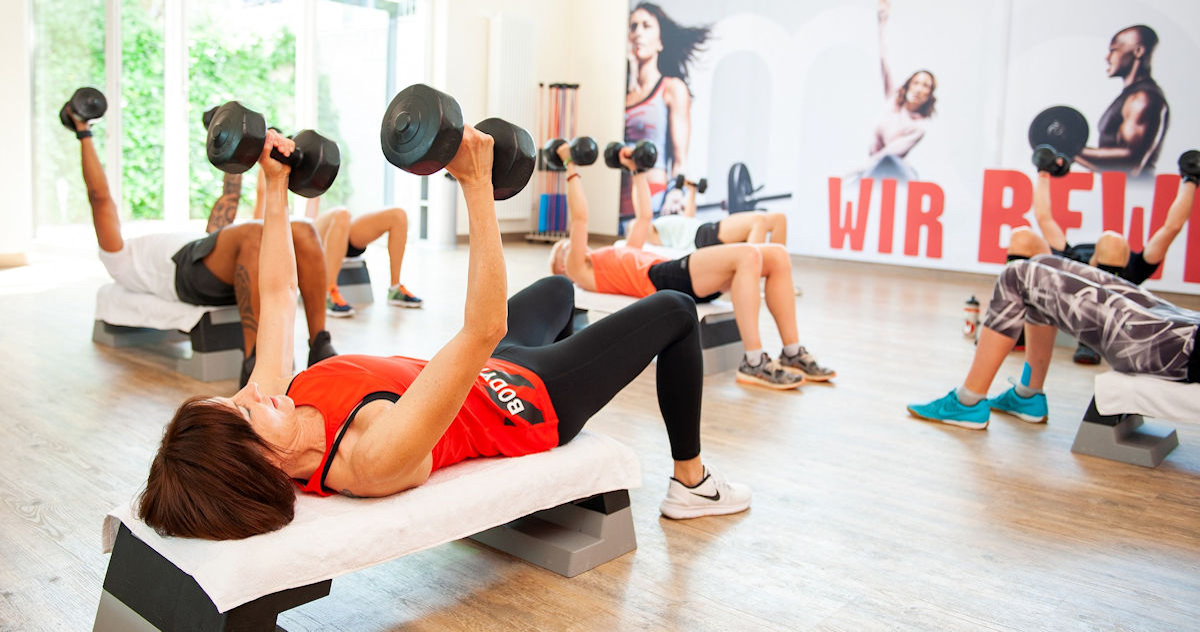Types of Aerobic Classes
- HIGH IMPACT AEROBICS (135-160 bpm): Moves that use large muscles to propel the body into the air, with both feet leaving the ground. Examples include jogging, jumping jacks, hops, traveling kicks, etc. This type is good for challenging the cardiovascular system
- LOW IMPACT AEROBICS (133-148 bpm): Moves that stay low to the ground, with one foot remaining on the floor. Examples include walking, marching, lunges, squats, side jacks, heels-up, knees-up, step touches, etc. Offers a high intensity with a reduced the risk of injury.
- MID-TEMPO AEROBICS (130-140 bpm): Moves similar to low impact aerobics but performed at a slower tempo. In addition to low impact aerobic workouts, Mid-Tempo is ideal for slide, aqua or pre-natal workouts and age specific groups.
|
- STEP AEROBICS (120-127 bpm): Moves that incorporate up and down movements on a platform (step). Step moves include basic steps, lunges, turn steps, V-steps, over-the-top steps, L-steps and knee-lifts.
- SUPER STEP AEROBICS (126-138 bpm): Similar to step aerobics but using a faster tempo. Intended for advanced classes, Super Step aerobics revolves around half-time power moves (squats, forward lunges, isolation holds, etc.), as well as the basic step moves.
- INTERVAL (Alternating 123-150 bpm): Alternates high and low intensity movements, which might alternate, step and aerobic combinations to challenge the cardiovascular system.
- CIRCUIT (123-126 bpm): Alternates aerobic activity with resistance activity. The general ratio is 3 minutes of aerobics to 1.5 minutes of resistance training to improve the cardiovascular system and increase muscular strength.
- WARM-UP (120-134 bpm): Moderate movements performed to prepare the body for vigorous exercise. Warm-up movements typically include simple actions of the large muscle groups, starting small and gradually increasing. A warm-up also includes stretching the muscles that will be used in the activities to follow. A typical warm-up is approximately 10 minutes long.
- CARDIO (bpm varies with the type of class): The portion of the class designed to work the cardiovascular system (see 1-7 above). The cardio segment is approximately 35 minutes long.
- POST-CARDIO (bpm varies with the type of class): Movements performed after the cardio (i.e. aerobics. step etc.) segment of a class. These help the cardiovascular system transition from a high intensity workout to normal activity, and bring breathing and heart rate back to normal levels. This portion of the class also includes resistance activities such as abdominal work, free weights, Resist-A-Balls, etc. This segment of class is typically 10 minutes long.
- COOL DOWN (Use slow relaxing music): Movements designed to lengthen the muscles after exercise return to the cardiovascular system to resting levels. A cool down typically combines stretching with slow, deep breathing, and slow rhythmic arm movements. A cool down is approximately 5 minutes long.
|

